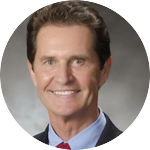
As the leading professional organization in municipal government, ICMA encourages all members to continue learning and growing. They also stress the importance of leadership, not just management. We in McKinney, Texas, agree and have spent five years creating what we believe is a comprehensive leadership development and learning program for staff at all levels.
Our efforts have paid off significantly in areas that are important to all senior leaders in municipal government. It has resulted in everything from increased employee engagement to stronger teamwork to higher staff morale. At the same time, it is helping to make us more of an employer of choice because so many of today’s employees seek out organizations where they can continue to learn and grow.
Knowing that leaders in other municipalities strive to achieve these same types of outcomes, we want to share several of the lessons we learned along our journey creating what we call “McKinney University.” And to make it more helpful, we organized them into six key steps to developing a high impact, comprehensive learning and leadership development program in your municipality.
Step One: Build a Foundation That Supports Your Strategic Goals
When creating our program, we followed Stephen Covey’s excellent advice and “began with the end in mind.” It caused us to think deeply about our overarching goal or desired end state. This may come as a surprise, but our primary objective was not to merely come up with an excellent training program. Yes, we wanted to develop a top-tier program, but specifically one that would, first and foremost, help further our city’s broader strategic goals.
For example, a top priority when we started to build our program was to breathe life into newly established unifying core values. In McKinney, our values are Respect, Integrity, Service, and Excellence (RISE). Knowing that authentically operationalizing our values was essential for success on several different fronts, we made sure to link back to one or more of them in every class or seminar we taught. And we asked the consultants and facilitators we hired to do the same thing when teaching classes for us.
Another strategic priority in our city when we got started was to create a stronger organizational culture. Toward that end, and like many of you, we use the High Performance Organization (HPO) framework as the GPS system to guide us along that journey. It promotes concepts like shared decision-making, leadership at all levels, and intentionally setting aside time for the important work of leadership. We believe strongly in each of these HPO principles and, therefore, make sure our classes and workshops address and reinforce them wherever possible.
There are other examples we could share here, but the important point is to avoid the tendency to look at your training program in isolation. Instead, we recommend you see it as a powerful and incredibly effective mechanism to help you achieve your broader strategic goals. Such an approach will pay big dividends in your organization over the longer haul.
Step Two: Start Small and Dream Big
We know some cities/towns/counties will be starting from scratch. In fact, we were in that same boat ourselves several years back, doing very little internal training or professional development. As such, we started by developing a good New Employee Orientation program. In addition to the usual topics covered in orientation, we built bridges to several of the important areas previously mentioned and even included an introduction to HPO.
Another good idea when just getting started is to seek subject matter experts who work in your organization, especially those who connect well with others. We did this with great success. For example, when employees asked about foundational classes on Microsoft Office, we turned to our informal administrative professionals’ group. Several members stepped up and created a series of hands-on classes that we made available to all employees. As a by-product, this approach is very effective in relationship-building and fostering greater communication and teamwork, skills that are important for all municipal government employees to have.
Keep in mind that your internal subject matter experts will likely need some coaching on adult learning theory. Teaching adults is vastly different than teaching K-12 students or even university students. To be effective, adult courses must be interactive, relevant, and engaging. To make the content meaningful, you have to get them involved.
Lastly, we recommend you launch your program with high-quality sessions that will create a buzz throughout the organization and stir up employee enthusiasm for more. This, in turn, also leads to support from supervisors and managers who will recognize the downstream benefits: increased motivation, greater teamwork, more efficiency, and better customer service, among other things. Remember: quality is far more important than quantity.
Step Three: Shift the Focus to Leadership Development
If you’re reading this article, you are likely a formal senior leader in your city or county—and one who understands that one of your most important roles is developing leadership in others. As Jack Welch once said, “When you become a leader, success is all about growing others.” This is nothing new. Harvey Firestone made the same point years earlier when he said, “The growth and development of people is the highest calling of leadership.” It’s true.
Our city manager and executive leadership team get it. Therefore, after we got our program off the ground, we naturally shifted our focus to leadership development. Incidentally, there was a real hunger for it across the organization, too. Accordingly, by focusing on leadership development, we also filled a significant void for our employees. Furthermore, as an HPO city that embraces leadership at all levels, we felt it was essential to also provide “leadership development at all levels.” And, of course, as already mentioned, we also knew that doing so would help us further our strategic goals. Here are the different tiers of leadership development we provide in McKinney:
Emerging Leaders: This course is for high potential front-line staff who embrace our core values but are not yet in a supervisory role. It centers on leadership basics, with much of the curriculum coming from a book called Leadership Risin g by retired Army Colonel John Antal (who actually teaches several of the classes for us). Department heads select employees to attend the course, drawing on input from supervisors and managers. We offer it twice per year and graduate about 25 employees in each class. It’s very popular.
New Leaders: This is a “buddy-to-boss” course and includes a series of classes specifically geared to employees recently promoted into their first supervisory role. It focuses on strategies to make a smooth transition to supervisor and covers areas like motivation, coaching, conflict management, making tough decisions, accountability, and the key differences between leadership and management. We offer the course twice per year and intentionally keep each one small, generally graduating 12 or 13 employees in each one.
Existing Supervisors and Seasoned Managers: For supervisors and more seasoned managers, we have a deeper dive nine-month leadership academy. It covers advanced leadership skills and topics like team dynamics, organizational culture, psychological safety, DEI, and presentation skills.
We break each academy class into small, cross-functional teams and have each complete a capstone project. You would be amazed at their initiative and creativity. Once they complete their work, the separate teams present their findings and recommendations to the city manager and executive leadership team. Our goal is to provide each employee with a real-world, hands-on leadership practicum, one that can also improve our organization. This approach also demonstrates what HPO looks like in action.
Departmental Leadership Teams: Like many of you, we have leadership teams in every operating department. Each one is charged with focusing exclusively on “Q-II” leadership work when they meet. Forward-leaning departments have gotten very creative in developing their own leadership development initiatives for employees. For example, the McKinney Fire Department developed a special two-week Captains’ Boot Camp course that centers heavily on leadership. Also, our Parks and Recreation Department established their own Parks Academy, which includes a strong leadership development component.
Executive Leaders: Consistent with the HPO methodology, we also have a well-established Executive Leadership Team that meets every other week to do the strategic leadership work for the city. About once per quarter we dedicate a meeting to leadership development. Those sessions cover topics like cognitive biases, emotional intelligence, diversity and inclusion, and change leadership. We typically bring in a well-respected academic or proven senior leader for these sessions.
The important point here is that we believe leadership development is important for even our most senior and accomplished leaders. Holding these sessions is good for their continual growth, and it sets a great example for everyone else in the organization. The message is loud and clear: “Leadership development and continuous learning are important for everyone in our organization.”
Step Four: Address Gaps and Build a Strong and Diverse Stable of Facilitators
In the spirit of continuous improvement, it is critical to periodically evaluate all programs to determine if they are meeting your organization’s needs. While it is tempting to rest on your laurels once the program has begun delivering strong results, there is a risk of content growing stale or irrelevant. Therefore, we evaluate all classes and workshops through regular surveys, and then use the results to course correct when necessary.
In addition to class surveys, we engage participants directly, asking them what they want, or in the case of supervisors, what they need in the way of classes for their employees to flourish. In some cases, we identify internal subject matter experts who help, as described earlier. In many cases, however, we reach out to local universities to find professors interested in partnering with us. We also go after experts in nearby cities, local and regional consultants, and former municipal leaders, all of whom provide unique insight. We think it is crucial that staff hear different perspectives, especially when it comes to leadership.
As a result of our ongoing efforts in developing relationships with content providers, we have successfully, over time, created a strong network within our region. In those cases where our external facilitators may not be able to cover a specific topic, they have been very helpful in referring us to a colleague who can help fill a void in our program. As with almost everything we do in government, it’s all about relationships!
Step Five: Keep Working the Margins
After nurturing our program for several years, like all of you we suffered disruptions because of the pandemic. When we could no longer conduct classes in person, we were agile enough to very quickly and effectively switch over to Zoom-based classes and seminars. We also wanted to send a strong “we care” message to our employees. Therefore, we had a psychology professor from Southern Methodist University offer virtual classes related to pandemic stress, along with the importance of optimism and staying connected in creative ways while working from home. These sessions drew larger attendance than many of our in-person classes. Our employees deeply appreciated them, too. Some, in fact, included their spouses, which we openly welcomed.
Beyond this, we recognized that we needed to be creative in other ways to keep our program fresh. For example, we launched an online book club, allowing employees from all departments and levels to meet weekly and discuss books centered on a wide range of topics they were interested in. The club has read about 15 different titles since it began—Angela Duckworth’s GRIT, James Clear’s Atomic Habits, Richard Rothstein’s The Color of Law, Carol Dweck’s Mindset , and even Shoe Dog by Phil Knight, the co-founder of Nike.
Furthermore, we worked with employees to create a quarterly cultural education series, inviting staff members to share their experiences with Kwanzaa, Diwali, Juneteenth, Mexican Independence Day, and more. These sessions have grown in popularity, reinforcing relationship-building, advancing our core values, and engaging employees in a way that introduces them to dates on the calendar that are important to our diversifying city. Also, they show our strong support for diversity and inclusion and our ongoing effort to create a strong sense of belonging within our entire organization— another important culture-building strategy.
And we established an internal Toastmasters club, which is entirely employee led. The participants, on their own, named it “RISE and Shine,” which is a good example of how they helped to reinforce our unifying values. All of these are examples of creatively working the margins to keep your program fresh and vibrant, while furthering your broader goals.
Step Six: Reinforce and Show Commitment
The final step that we feel is important is intentionally and regularly demonstrating a strong commitment to continuous learning and leadership development to eventually make it part of your organizational culture or DNA. This is an excellent area to seek help from your most senior leaders. Have them introduce individual sessions or even attend them start-to-finish. They are perfect when it comes to relating the content back to key areas that we mentioned in Step One, and they also like spending some quality time mixing with employees.
Additionally, we recommend you continually reinforce key messages whenever career-oriented discussions take place. These topics are important in a training environment, but they also promote a culture of learning when leaders include them during employee reviews, career chats, coaching sessions, or celebrations of success. Toward that end, we even modified our employee evaluation system to include a block on professional growth.
Additionally, work to have your key messages woven into town halls, etc. Above all else, ensure that employees receive a consistent message from every angle: everyone in the organization is expected to continue growing and learning.
In summary
An organization that is authentically committed to learning and leadership development is one that differentiates itself from others. Through targeted and intentional programs that reflect and reinforce enterprise-wide values and other strategic priorities, a strong culture emerges and employee engagement increases. The dividends that your organization realize from a comprehensive learning and leadership development program will more than pay for the time and effort you put into building it. Think of it as an investment in the future—and a good one.
As the work of local government continues to evolve in the coming years, not only will you build capacity to adapt, but your organization will cultivate a robust team capable of moving the organization forward through a shared set of values, enhanced leadership skills, and a commitment to flexibility, creativity, and continuous improvement. And, if that’s not enough, you will make sure that the members of your team do the very best job possible supporting the residents of your community—which is why we exist!

JOE MAZZOLA is director of organizational development for McKinney, Texas, and the recipient of the 2021 ICMA Assistant Excellence in Leadership Award. He is a retired military colonel and a 2022 graduate of Harvard’s Senior Executives in State and Local Government program.

JOHN CUNNINGHAM has served as training administrator for McKinney for five years. He has over 12 years of training and management experience at Disney. John is a subject matter expert in curriculum development, adult learning theory, coaching, communication skills, customer service, innovation, and leadership development.
New, Reduced Membership Dues
A new, reduced dues rate is available for CAOs/ACAOs, along with additional discounts for those in smaller communities, has been implemented. Learn more and be sure to join or renew today!
